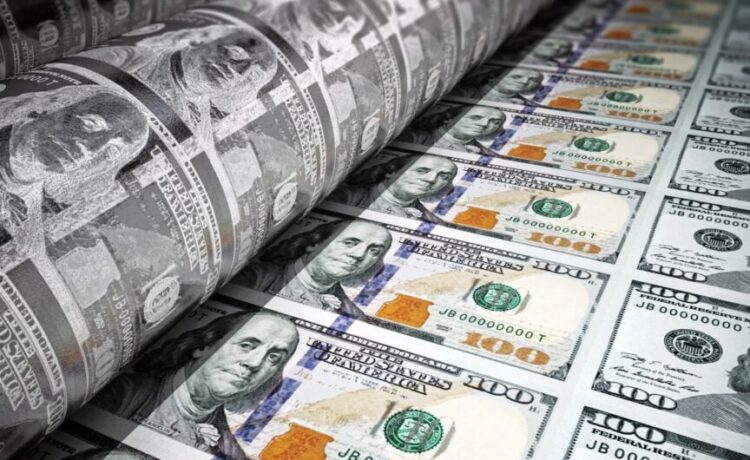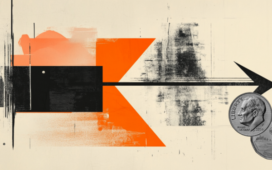This 141-Year-Old Retailer Is Outperforming Amazon
Forget tech behemoths. This old stock is expanding faster while raising dividends. Believe it or not, it has handily beaten Amazon’s 117% run since 2019. By reading Benzinga’s latest insider-only report, you can set yourself up for future profits and income with this stock, plus more.Get access for just $0.99.
Japan is well-known for following dovish monetary policies to stimulate economic activity. As the world’s third-largest economy has held its key interest rates at negative 0.1% since February 2016.
While the country successfully navigated through post-pandemic inflation woes without raising benchmark interest rates, the stickier-than-expected inflation trajectory drove the Bank of Japan (BOJ) to adopt a more hawkish approach last week, marking the first rate hike in 17 years.
ENTER TO WIN $500 IN STOCK OR CRYPTO
Enter your email and you’ll also get Benzinga’s ultimate morning update AND a free $30 gift card and more!
Don’t Miss:
“We reverted to a normal monetary policy targeting short-term interest rates, as with other central banks,” Bank of Japan Gov. Kazuo Ueda said. “If trend inflation heightens a bit more, that may lead to an increase in short-term rates.”
This comes as Japan’s largest federation of trade unions Rengo raised its base pay by nearly 5.3% on a weighted average basis, as the country’s core inflation levels remain higher than the targeted 2% rate. However, the central bank set its current short-term interest rate at 0%-0.1%, marking a 10 basis point increase.
Japan’s Largest Wage Hike
Earlier this month, Japan’s largest corporations reached an agreement to implement a substantial 5.28% increase in wages for the year 2024, marking the most significant pay raise in 33 years. This move solidifies expectations that Japan’s central bank will soon transition away from its decade-long stimulus program.
Rengo President Tomoko Yoshino attributed the significant pay raise to mounting income inequality, inflationary pressures and a shortage of labor. Yoshino also revealed that part-time workers would experience a 6% wage hike in the current fiscal year.
Your Exclusive Benzinga “Insider Report”
Get our best weekly stock picks and analysis sent right to your inbox. Gianni Di Poce shares a “major alpha alert” in this week’s issue. Don’t miss out! Click below to secure our top stock picks. Try it today for $0.99.
“We estimate that this year’s wage hikes could reach 5.3%. If that is realized, real wages would turn positive in April-June 2024,” Itochu Economic Research Institute economist Moe Nakahama said.
Market Reactions
About 90% of central bank watchers predicted the Bank of Japan’s move as global inflation troubles pile on. However, the interest rate hike caused the Japanese yen to depreciate substantially over the past week. The yen fell to its weakest level against the dollar as of March 20, marking its lowest since 1990. The third-most-traded currency ranked as the worst performer compared to the G10 currencies.
“The BOJ today took its first, tentative step towards policy normalization,” said Frederic Neumann, chief Asia economist at HSBC Holdings. “The elimination of negative interest rates in particular signals the BOJ’s confidence that Japan has emerged from the grip of deflation.”
What It Means For US Dollar
Despite the interest rate hike, the Japanese Yen remains one of the most favored currencies for carry trade against the U.S. dollar, given its vast interest rate differential with the world’s reserve currency.
Carry trading involves borrowing yen at favorable rates to invest in higher-yielding U.S. Treasuries. With the Federal Reserve holding the federal funds rate steady at 5.25%-5.5%, the high-interest rate differential between the two currencies makes them one of the most popular forex pairs for carry trading.
The Dollar Index rose by 0.33% on March 19 to lodge its best performance in roughly two weeks. The yen has dipped below the 150 mark against the dollar, reflecting investor sentiment that the interest rate gap between Japan and the U.S. would persist.
“Anytime the Fed and the BOJ are moving policy settings at about the same time, it’s always the Fed that rules and dominates the price action, even in dollar/yen,” Macquarie FX and rates strategist Gareth Berry said. “So the BOJ’s decisions generally are, as far as the yen is concerned, a matter of secondary importance.”
Read Next:
This 141-Year-Old Retailer Is Outperforming Amazon
Forget tech behemoths. This old stock is expanding faster while raising dividends. Believe it or not, it has handily beaten Amazon’s 117% run since 2019. By reading Benzinga’s latest insider-only report, you can set yourself up for future profits and income with this stock, plus more.Get access for just $0.99.
© 2024 Benzinga.com. Benzinga does not provide investment advice. All rights reserved.





